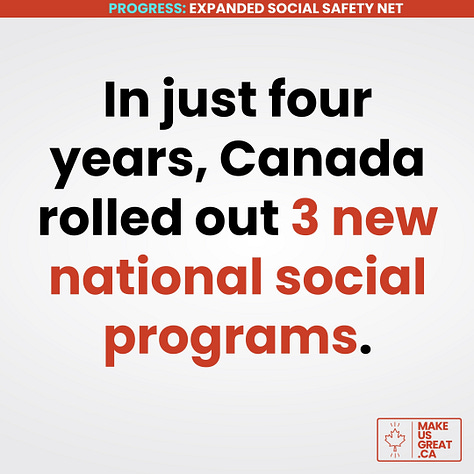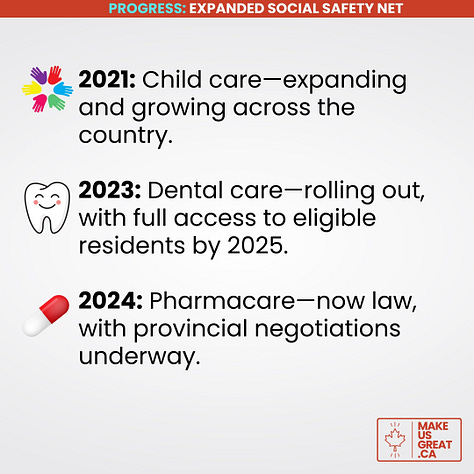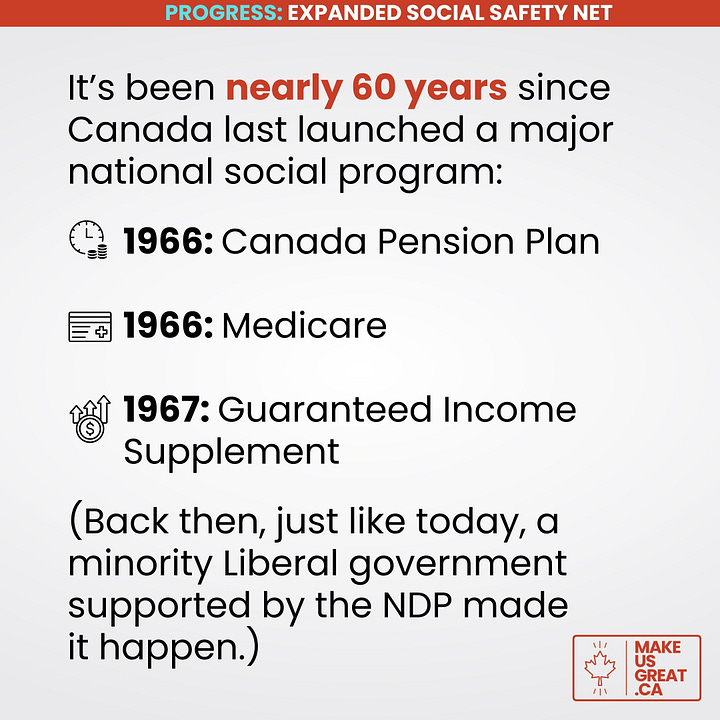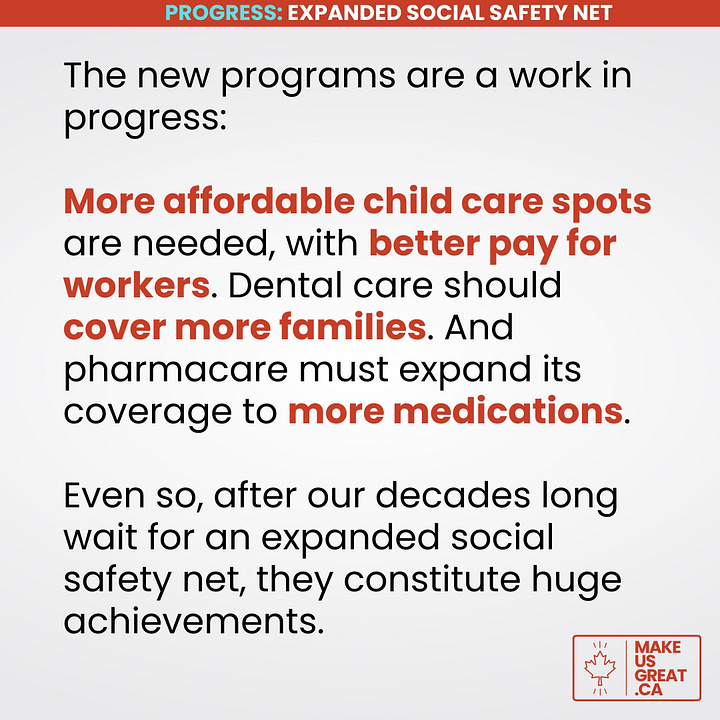Canada’s Social Safety Net is Growing—Finally
In just four years, Canada rolled out three new social programs
In recent years, Canada introduced three major national social programs that were long overdue:
2021: A national early learning and child care program, promising $10-per-day child care within five years.
2023: A national dental care plan, currently rolling out with a goal of covering nine million people.
2024: A single-payer drug plan, paving the way for universal pharmacare.
Despite our reputation for having a strong social safety net, Canada has long lacked key national programs that could adequately support its citizens. While universal healthcare became law in 1966, both dental care and pharmacare have been glaring omissions. Canada has stood out globally, especially within the OECD, as the only country with national healthcare but no publicly-funded pharmacare.
The struggle to establish a national early learning and child care plan followed a similar path. Prior to 2021, the closest we reached to achieving a national plan was in 2005, when the minority Liberal government led by Paul Martin negotiated bilateral child care agreements with each province and funded the so-called “Foundations Program” with $5 billion in federal money. Unfortunately, Martin’s government fell soon after and the newly elected Conservative government of Stephen Harper quickly canned the initiative.
While some provinces have introduced their own child care, dental care, and pharmacare programs, these have been limited and uneven. Quebec’s child care system, introduced in 1997, remains an exception. Despite challenges, it served as a powerful precedent and inspiration for the introduction of a national child care plan.
Canada’s reputation as a “socialist” northern neighbour to the United States has historically rested on social safety programs introduced 60 to 80 years ago:
1940: Unemployment Insurance
1952: Old Age Security
1966: Canada Pension Plan
1966: Medicare (universal healthcare)
1967: Guaranteed Income Supplement
To be sure, the above programs were revised and adjusted over the following decades. And a number of programs ostensibly aimed at partially covering child-related expenses were introduced over the last few decades, such the Canada Child Tax Benefit in 1993 and the Canada Child Benefit in 2016. Yet, these programs amounted to cash transfers that, while providing some financial relief to families, ultimately did not lay the foundations for long term social development. Moreover, future governments could easily scale them back or eliminate them altogether.
In this context, the rapid introduction of three new national social programs between 2021 and 2024 is significant. Such progress is rare, and history suggests it may not be repeated soon.
Although the Liberals had floated ideas for new social programs in earlier years, it was the Covid-19 pandemic as well as the party’s minority government status from 2019 onwards that gave the initiatives momentum. The pandemic upended the lives of millions and highlighted the vulnerability of so many in Canada, while the government’s minority status in parliament ensured that the opposition NDP had leverage to push for progressive measures.
That said, the new programs are still a work in progress:
The child care plan is moving towards the $10 a day target, but more affordable spots and better wages for workers are needed.
The national dental care plan has expanded access to dental services, with providers able to bill the federal government directly. However, it’s a means-tested program and may not cover all costs.
The pharmacare plan, while promising, will initially cover only diabetic and contraceptive drugs and devices before expanding further. Moreover, the federal government must reach a bilateral agreement with each provincial government to implement the plan. Even so, there are some positive developments, including the recent establishment of a Committee of Experts charged with shaping the national program that excluded corporate representatives.
Of course, with federal elections that could be called any time until October 2025, there is a serious risk that a future Conservative government could scale back or cancel any of the new programs, particularly those that have not been fully rolled out yet. Conservative leader Pierre Poilievre has been “noncommittal” when asked if he would keep the new programs should he become Prime Minister. We must remain on guard.
Canada is a wealthy country, ranked among the world’s ten largest economies. We can certainly afford continued expansion of our social safety net, so essential to creating a healthier, more vibrant society for all.









